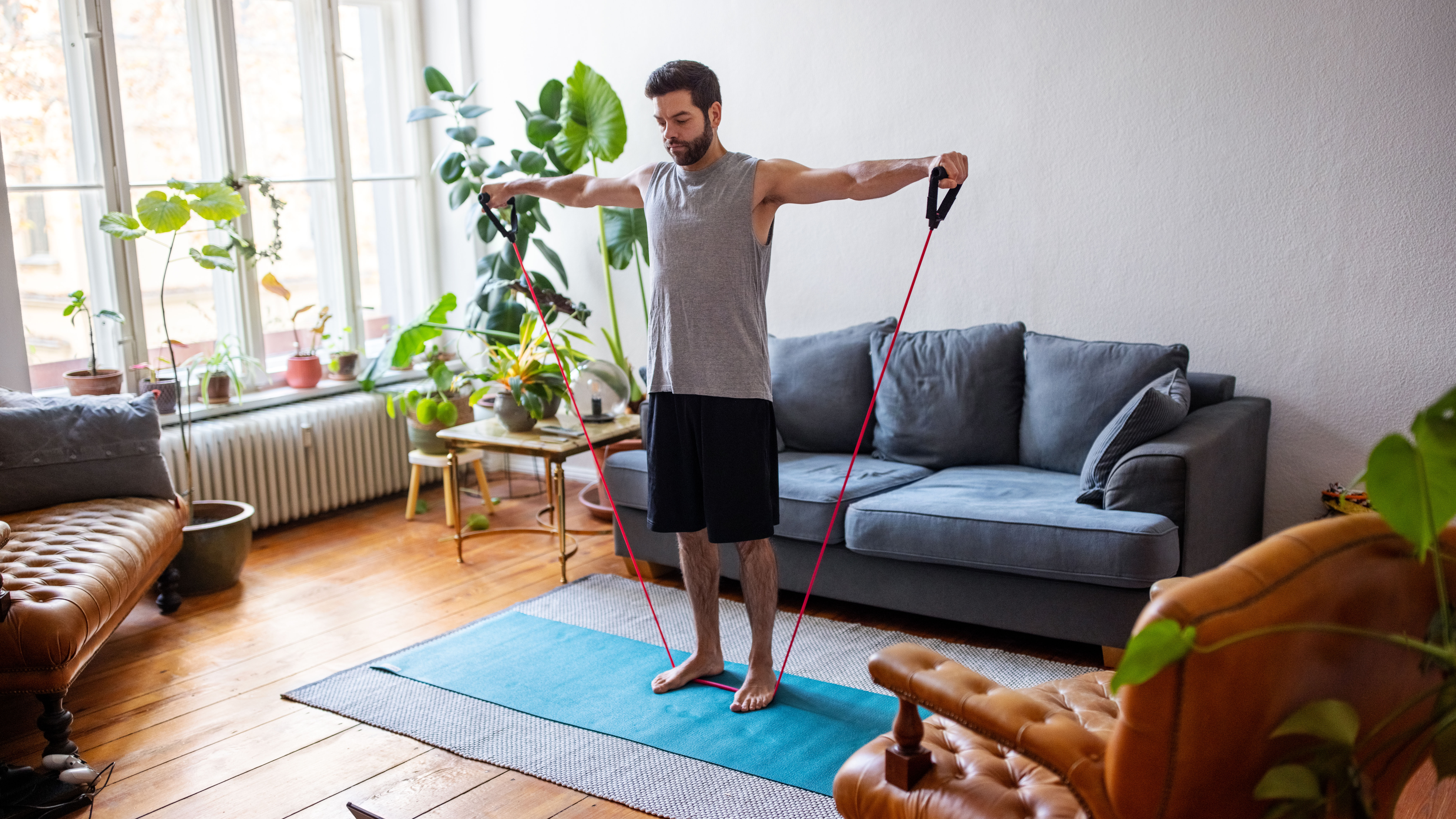Do resistance bands build muscle?
A lightweight alternative to free weights, exercise bands are often an underrated tool in your training arsenal, but do resistance bands build muscle?

Do resistance bands build muscle? Walk into most gyms and you’ll see fitness enthusiasts swarming the free weights section, but you’ll likely see fewer people using resistance bands in their workout. This can lead to the misconception that resistance bands aren’t as effective as weights in building muscle when, in some cases, they may offer an advantage over other approaches.
Before you head over to search for the best resistance bands, read on and we’ll stretch your mind with expert advice as to why resistance bands may be the right tool to develop your fitness regime.
Can resistance bands build muscle?
Can resistance bands build muscle? “Yes!” answers Gina Reinge, a sports therapist who has spent years working with professional athletes. Though with the principle that underpins the use of resistance bands being virtually identical to that of free weights, it should perhaps come as no surprise.
“Resistance bands can build muscle in the same way as using weights can,” says Reinge. “Studies, such as one in the Journal of Clinical Nursing, have shown that when performing resistance exercises with bands there is no statistical difference to the gains found with a band to a weight.”

Gina Reinge MSc, BSc, is an experienced sports therapist who has spent years working with professional athletes, including having spent four years working at the High Performance centre in Bath, UK with international elite-level judo players. Along with her husband, she runs a multidisciplinary clinic in Portishead, UK.
In fact, if you are an older adult there is a good reason to use them. “They are especially useful for older adults where there is good evidence of strength gains,” says Reinge.
Resistance training is particularly important for older adults as it helps to offset the natural loss of bone density and muscle that comes with aging. Furthermore, resistance bands offer advantages over free weights as they cost less, are easier to store and are more portable, making them especially useful for home or open space workouts.
How do they compare with free weights?
Resistance bands make for a worthy alternative to free weights, but should you be fortunate enough to have a choice between the two, in which specific instances might you opt for the bands?
Reinge points to a study in the Journal of Strength and Conditioning Research as just one that has shown gains “in upper body strength, velocity and power using resistance bands over free weights, with a consensus forming that begins to support this idea.”
With regard to specifics, she says: “They have been shown to be particularly useful for some multi-joint exercises as well, such as the lateral row and lat pulldowns and possibly even the stiff-legged deadlift.”

Exercises that are less effective with resistance bands tend to be the ones that are trickier to apply constant force to, such as the squat, says Reinge, adding: “with strength gains only showing up at the end of range once the band is tight.”
Therein lies the chief disadvantage of resistance bands compared with free weights – being that they offer variable resistance compared with constant resistance. Ultimately, the latter makes for a more challenging workout, but it depends on the specific movements within the exercise as to whether this applies.
How to efficiently build muscle with resistance bands
The key fundamental to build muscle is progressive overload. As Reinge explains: “The important thing is to ensure you are ‘overloading’ the muscle. A muscle that performs a movement easily will not gain mass improvements. You can overload a muscle by increasing the resistance or by slowing a movement down, or both.”
In this sense, resistance bands are excellent for building beginner-level strength and activating smaller muscles. However, if you’re looking to recruit larger muscle groups, or are training towards higher levels of strength, then you may want to opt for free weights. Whichever option you pick, Reinge says: “The important element is that you are training the muscle that you want to, good form is important, as is starting at a level the muscle can tolerate. If you are starting from a weak point you may have to use a light band initially. Once easy, increase the band resistance, complete more reps or slow the movement down.”

It depends on your specific goals as to whether resistance bands are the right tool for you. However, they integrate well into almost any fitness programme, whether that’s as part of a warm-up, as a tool during the main workout, or as a supplemental piece of kit to support bodyweight exercises, such as chin-ups and pull-ups. Ultimately, it is their range of uses that makes them a must-have in any gym and a key piece of equipment to consider for home workouts.
Sign up for the Live Science daily newsletter now
Get the world’s most fascinating discoveries delivered straight to your inbox.
Dan Cooper is an experienced fitness writer who firmly believes in the power of running. The hardest race he has completed so far was Tough Guy, the world’s oldest and most demanding OCR event. There he learned that you may be able to outpace opponents, but outrunning hypothermia? That's a different race entirely.











